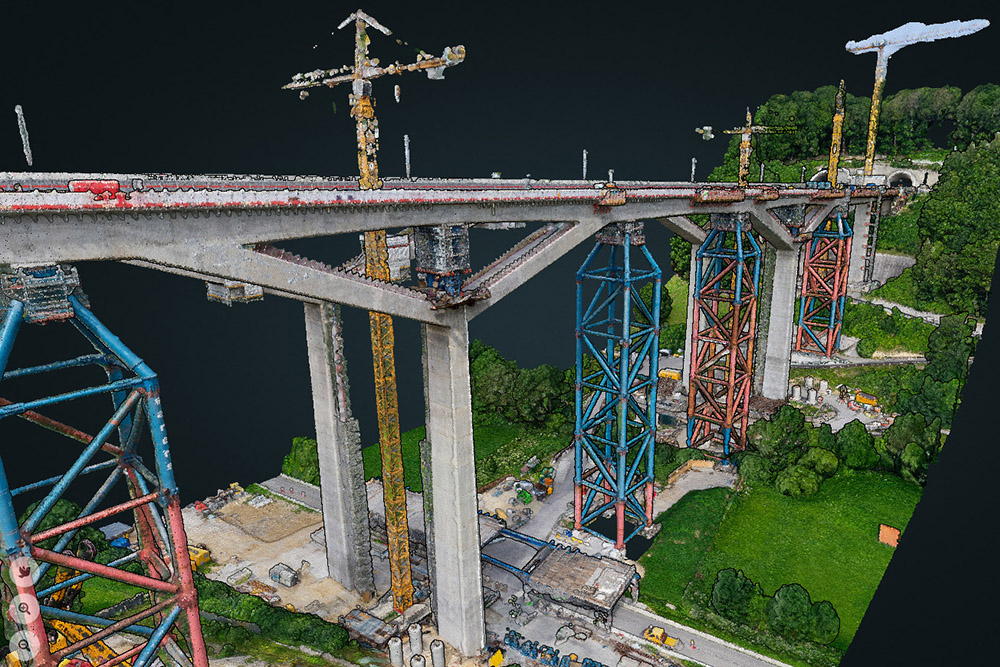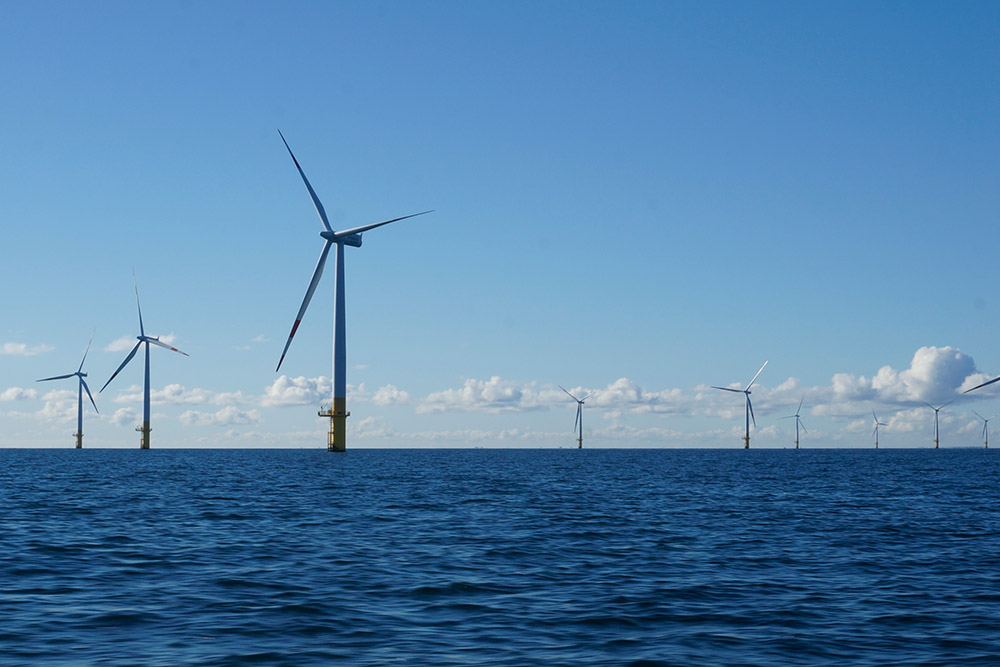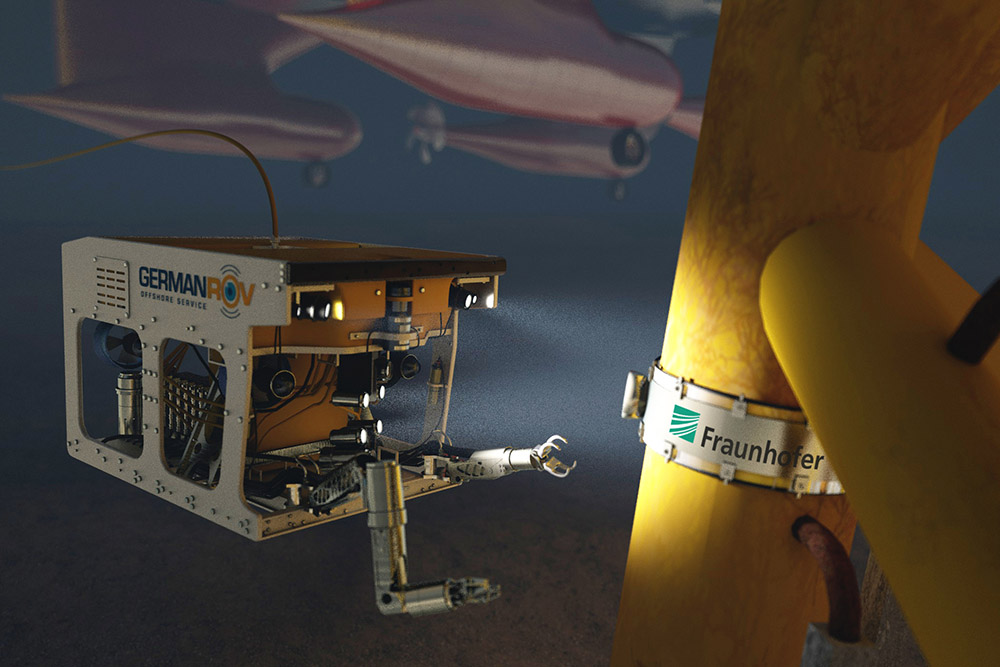Authors: Lina Holzapfel, Andreas Schnabel, Andrea Gaal
Digital Twins – smart mirror images provide increased safety
A digital twin is the virtual replica of an object, its mirror image so to speak. It consists of data and models and can describe or predict the behavior of the object. Virtual tests, simulations and risk analyses can be used to identify problems at an early stage and reduce maintenance costs. The data on which the Digital Twin works must be determined in advance. Fraunhofer IKTS is working on such sensors, i.e. sensing devices that measure and provide the required data.
For the area of safety-relevant structures both on land and at sea, Fraunhofer IKTS is working on various projects on Digital Twins: virtual images of bridges, pipeline networks or foundations of offshore structures help to increase the safety of these structures and to reduce the operator's costs for maintenance.
Safe bridges and pipelines
Monitoring and determining the remaining service life of bridges (image 1) and pipelines via Digital Twins is the subject of the DTPIALM project (Digital Twin Platform for Infrastructure Asset Lifecycle Management, funding code 01DM21007A).
For this purpose, Fraunhofer IKTS is implementing measuring systems in which the necessary sensors are integrated. These are permanently installed on the structure requiring monitoring. Specially developed measurement methods based on guided ultrasonic waves provide data from the load tests (e.g. corrosion tests). The data is transferred to the Digital Twin via IoT interfaces to ensure that it is supplied with relevant and up-to-date information.
For the digital twin to adequately process the measurement data, it must be classified and analyzed. The AI solution, developed by the project partners at the University of British Columbia and the National Research Council of Canada NRC, performs this task and displays the data using augmented reality or mixed reality. This allows the maintenance engineer to view a 3D image of the monitored structure overlaid with the measured data. If this is done via a smartphone or data glasses, maintenance can be planned on site, as weak points are directly visible and can be inspected immediately. If the inspector is not on site, the Digital Twin provides a realistic 3D image, which can also be used to estimate the remaining service life via simulations.
Monitoring the foundations of offshore structures
A measuring belt (ComoBelt) developed at Fraunhofer IKTS – a ring equipped with sensors – can permanently monitor underwater structures (Image 2). By means of so-called guided waves, damage to the structure is detected. But how can the data be read out underwater without resorting to risky diving operations? ROVs (Remote Operating Vehicles) are used for this purpose, which read out the data at the ring, transmit it by radio and feed it into a Digital Twin (Image 3). This data-fed 3D model can be used to realistically represent the hard-to-reach underwater structure on land, thus facilitating the planning of maintenance measures by indicating defects or material fatigue.
In the recently launched project “SOT Digital Twin”, which is based at the Ocean Technology Campus Rostock, the focus is on monitoring such offshore structures with the ComoBelt of Fraunhofer IKTS.
During the project, the collected measurement data and various physical models will also be used to make statements about the remaining service life in order to coordinate maintenance measures efficiently.
Maintaining technical structures for longer
Both projects contribute not only to making maintenance more economical, but also to extending the life cycle of these facilities. This means that an intact plant can be operated beyond its planned service life, because permanent monitoring and damage prediction enable safe operation. Dismantling or rebuilding can thus be delayed, if not avoided. This saves time and resources and reduces costs.
Do you envision further interesting applications? Contact us!
Further information
- Wireless sensor systems for safe offshore structures – CoMoBelt®
- Industrial Solutions: Condition monitoring
- Offshore solutions for inspection and monitoring
Stay informed: You are welcome to subscribe to our newsletter, read our other blog articles and follow us on LinkedIn, Instagram and YouTube.


